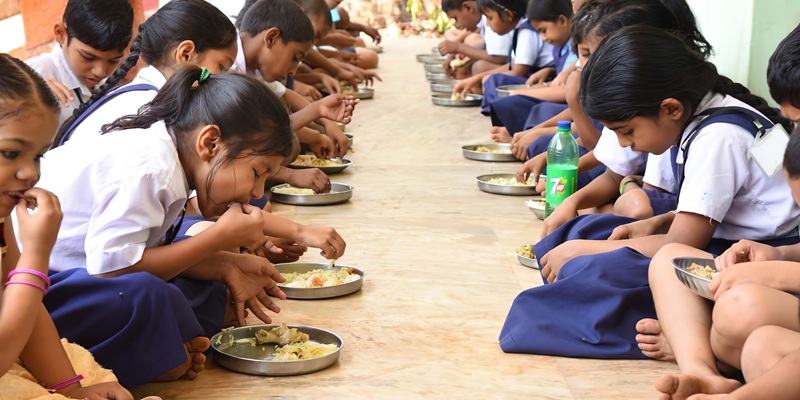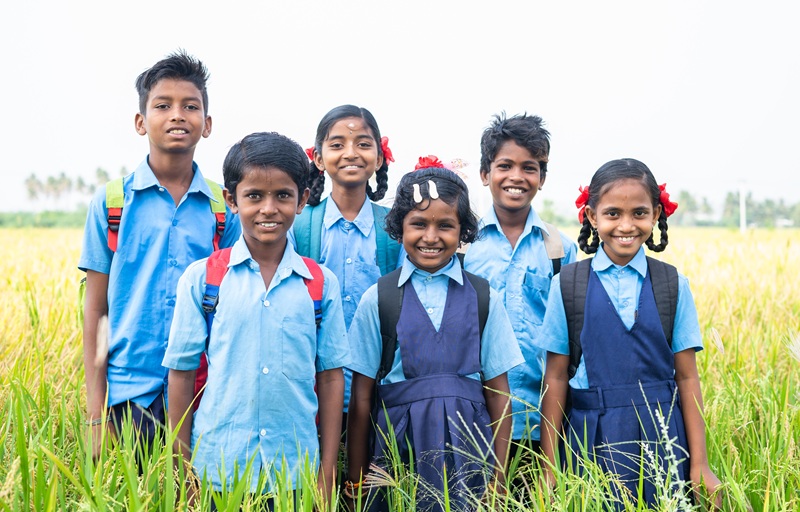Bridging the Education Gap: A Collective Journey Towards Universal Learning

Yesterday, while working from home, I noticed that my house help had brought her daughter along, who seemed about six years old. As her mother busied herself with household chores, the little girl sat in a corner, playing with her toys.
It was a weekday, and schools were in session. Unable to hold back my curiosity, I approached her and asked why she wasn’t at school. Her response was familiar, yet disheartening. Despite giving her mother some old notebooks and stationery for her children’s education, the girl, Reema, revealed that neither she nor her siblings had ever been enrolled in school. The supplies I had provided remained unused at home.
This underscores a stark reality: despite the efforts of policymakers and numerous government initiatives – such as the Sarva Shiksha Abhiyan (SSA), the Right to Education Act, and Beti Bachao, Beti Padhao – educational gaps persist in India.
According to data from the Ministry of Education, over 11.70 lakh children were out of school across India in the first eight months of the fiscal year 2024-25. Uttar Pradesh recorded the highest number, with 7.84 lakh children out of school, followed by Jharkhand with over 0.65 lakh and Assam with more than 0.63 lakh.
This raises a critical question: Why does this gap still exist? What are the challenges to education in India? While the reasons vary, they often include:
- Poverty: Poverty is one of the primary barriers to education. Parents often view sending their children to school as a loss of a helping hand to the household income.
- Gender Inequality: In 2021, the National Sample Survey Office reported that 11.70 million girls were out of school in India compared to 3.40 million boys. Early marriage, societal norms, household responsibilities, and issues like menstruation are significant contributors. A UNICEF study revealed that 71% of adolescent girls in India were unaware of menstruation until their first period, leading many to drop out of school.
- Distance to School: Children living far from schools are more likely to drop out due to the challenges of commuting.
- Safety Concerns: Fears of violence and harassment deter some parents from sending their children to school.
- Lack of Awareness: Many families remain unaware of the government schemes designed to support education, leading to underutilization of these resources.
While challenges like poverty and gender inequality continue to hinder education for many, significant efforts have been made to address various other issues and strengthen the Indian Education System. The Unified District Information System for Education (UDISE+) highlights significant improvements in government school infrastructure. Of the 14.71 lakh schools in India, 10.17 lakh are government-run. Among these, 9.12 lakh have functional electricity, and 9.78 lakh provide safe drinking water – basic but crucial necessities for a healthy learning environment.

Programs like the Mid-Day Meal Scheme have also been pivotal in improving attendance. In 2021-22, over 11.80 crore children across 11.20 lakh schools were provided with nutritious meals, addressing both hunger and enrolment rates. Similarly, the Samagra Shiksha scheme ensures free textbooks for students in government and government-aided schools. In 2023-24, more than 10.41 crore children received these resources, enabling them to engage meaningfully with their studies.
While these initiatives represent significant progress, they also raise an important question: Why is Reema not attending school despite improvements in infrastructure and access to resources, like stationery items? If the problem isn’t logistical, could it be behavioral or cultural? In many cases, deep-rooted societal norms and limited awareness about the value of education create obstacles for families. For example, some parents might undervalue education for girls, seeing their immediate help with household responsibilities as more critical than the long-term benefits of schooling.
What should be done to ensure children like Reema are not left behind from accessing education? How can we make the dream of education for all a reality, especially in rural India?
Achieving universal education is not just the responsibility of policymakers; every individual has a role to play. By supporting data-driven programs and Indian school education policies, fostering community awareness, providing counseling sessions to parents, and embracing holistic and multi-sectoral approaches, we can bring children like Reema into the fold of learning.

Let’s step up and make a difference. Together, we can build the India of our dreams – a nation where every child has the opportunity to learn, grow, and thrive.
Ankita Valecha – Communication Consultant, Sambodhi
